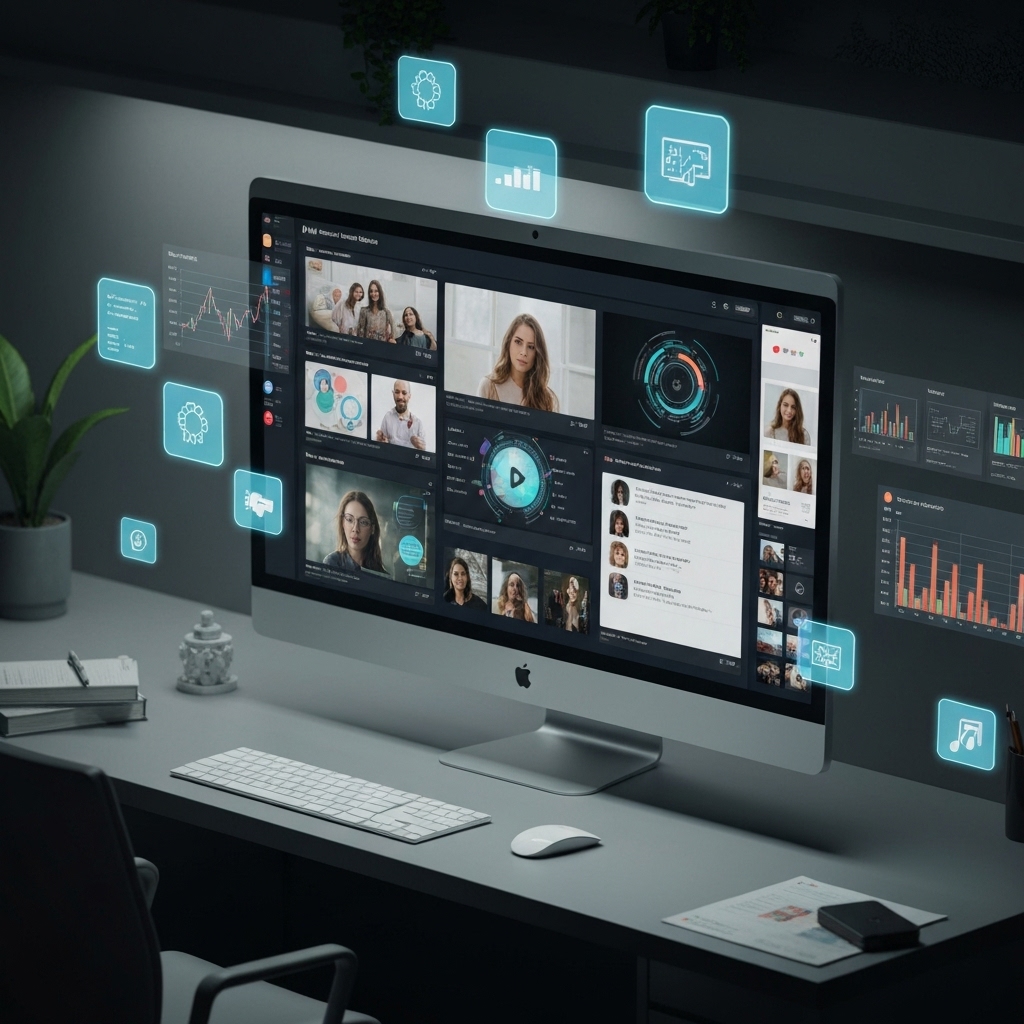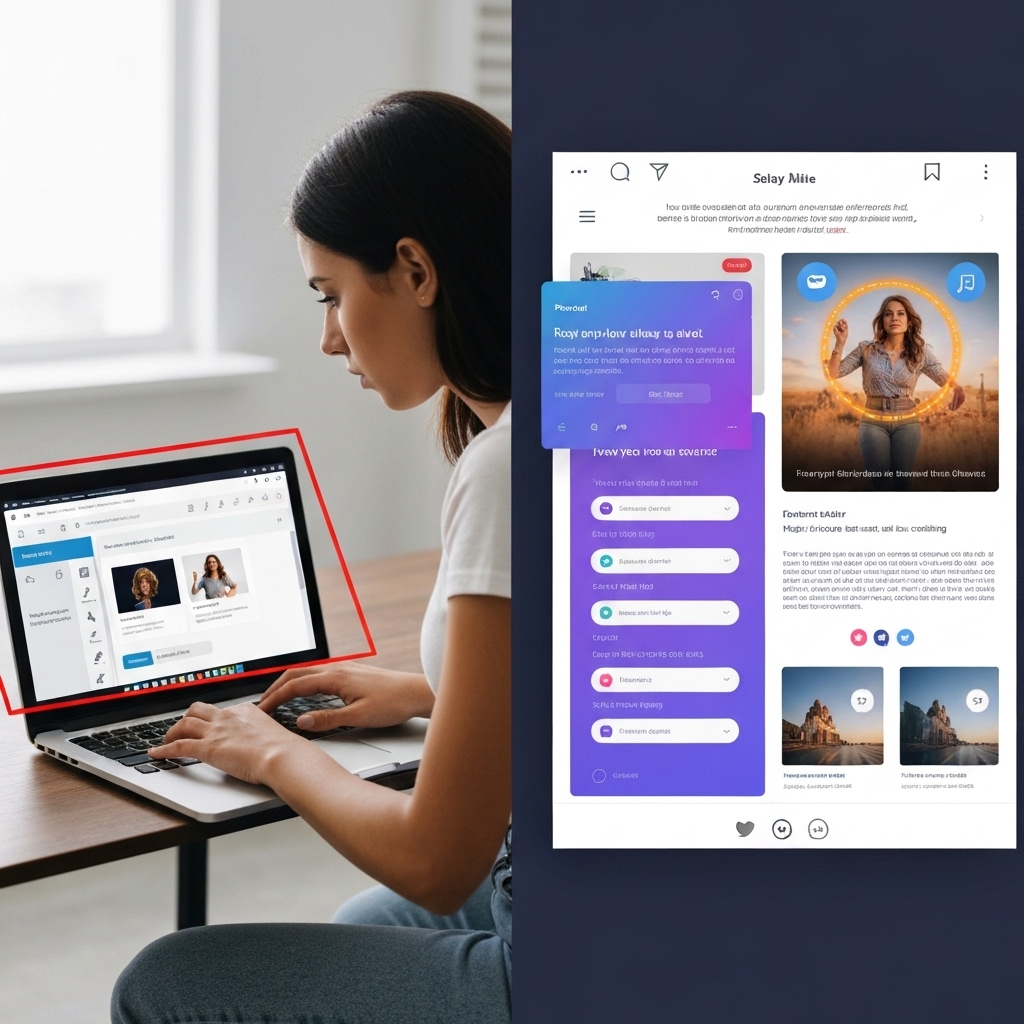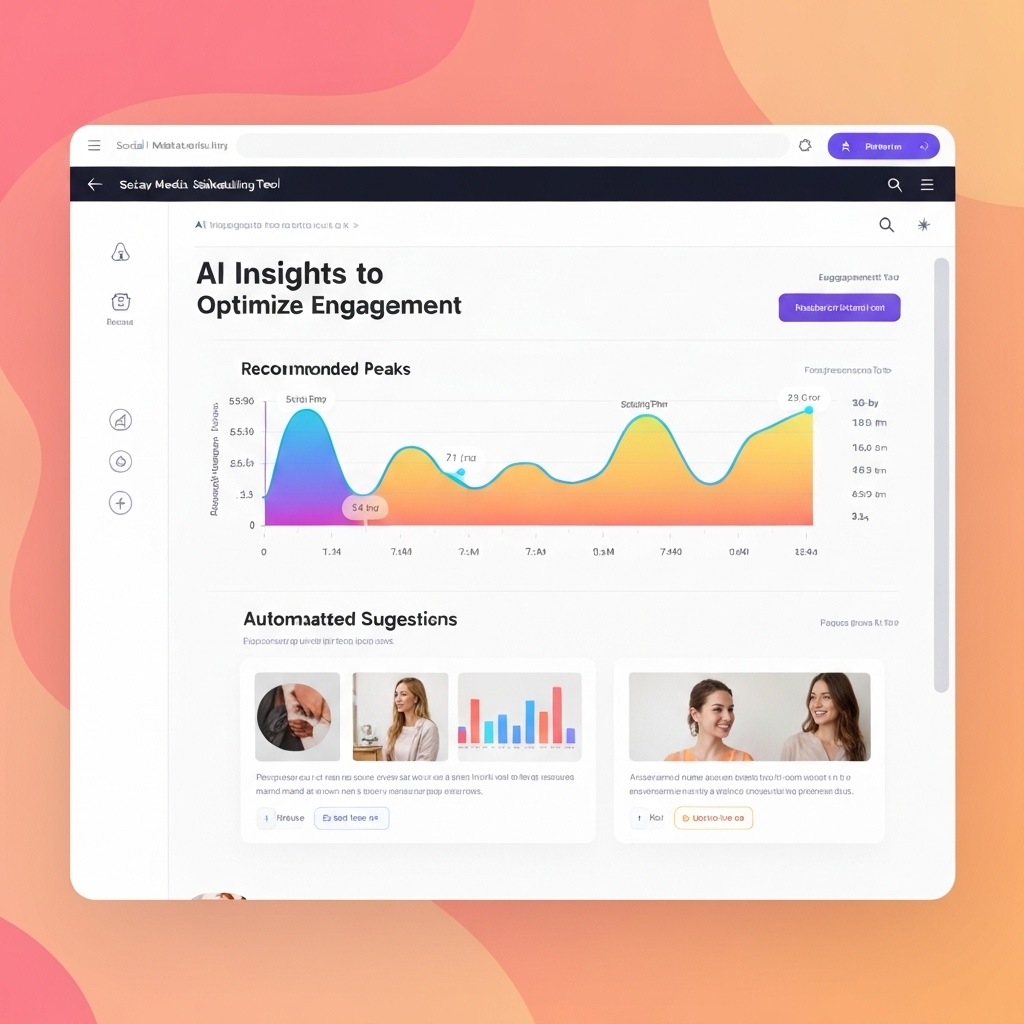AI Tools for Social Media Post Creation: The Future of Content at Your Fingertips
AI Tools for Social Media Post Creation: The Future of Content at Your Fingertips
Creating consistent and compelling social media content is no longer a daunting task thanks to the rise of AI-powered tools. These innovative solutions are transforming how marketers and creators approach content development by automating time-consuming tasks such as caption writing, hashtag suggestions, and even audience targeting. With artificial intelligence analyzing vast amounts of engagement data, content can be optimized for maximum reach and impact—ensuring your message resonates with the right audience at the right time. Platforms like HubSpot highlight how AI enhances personalization and efficiency in digital marketing strategies.
AI doesn’t just streamline workflows—it elevates creativity. Tools powered by natural language processing and machine learning can generate catchy captions, suggest post timings, and even create full visual designs tailored to brand aesthetics. For instance, platforms like Canva and Adobe Express integrate AI features that help users design professional-grade graphics without needing advanced skills. According to Adobe, AI-driven design tools empower teams to maintain a cohesive and visually appealing social media presence effortlessly.
For businesses, the implications are significant: reduced production time, lower costs, and improved engagement rates. AI analyzes performance metrics in real time, enabling rapid adjustments to content strategy. This agility allows brands to stay relevant in fast-moving social media landscapes where trends emerge and fade within hours. As noted by Social Media Examiner, companies leveraging AI report higher ROI on their social campaigns due to data-backed decision-making and automated optimization.
Ultimately, AI is not replacing human creativity—it’s enhancing it. By handling repetitive tasks and offering intelligent insights, AI frees up creators to focus on storytelling, community engagement, and strategic growth. As these tools continue to evolve, embracing AI in social media management isn’t just an advantage; it’s becoming essential for staying competitive in a crowded digital space.
Why AI is Transforming Social Media Content Creation
AI-powered tools are transforming the way content creators engage with their audiences by leveraging data-driven insights to refine their strategies. By analyzing vast datasets, these tools identify patterns in user behavior, such as preferred content types and peak engagement times, allowing creators to tailor their posts for maximum impact. Platforms like HubSpot utilize artificial intelligence to recommend optimal publishing schedules and content formats, ensuring messages reach followers when they're most likely to interact.
Moreover, AI excels at uncovering trending topics across social platforms and search engines, giving creators a competitive edge in staying relevant. This real-time trend analysis helps brands and influencers align their messaging with current conversations, increasing visibility and engagement. Tools like Google Trends, enhanced with AI algorithms, provide actionable insights that guide timely and impactful content creation.
Automation also plays a crucial role by taking over repetitive tasks such as scheduling posts, responding to common inquiries, and monitoring performance metrics. This streamlining frees up valuable time for marketers and creators to focus on high-level strategy and creative development—areas where human insight remains irreplaceable. As noted by experts at McKinsey & Company, automation can reduce operational burdens by up to 30%, significantly boosting productivity.
Ultimately, the integration of AI into content workflows empowers professionals to be more strategic and innovative. By combining machine efficiency with human creativity, teams can deliver personalized, timely, and compelling content that truly resonates with their audience—driving deeper connections and long-term loyalty.

Top AI Tools for Caption and Copy Generation
AI-powered writing tools such as Copy.ai, Jasper, and Writesonic are transforming how content creators and marketers produce engaging copy. Leveraging advanced natural language processing, these platforms can generate compelling captions, persuasive ad copy, and well-structured blog posts in a fraction of the time it would take manually. Whether you're targeting Instagram’s visual audience or LinkedIn’s professional community, these tools adapt tone and style to fit each platform’s unique demands.
By simply entering a few keywords or a short prompt, users gain access to multiple creative variations within seconds—ideal for brainstorming or overcoming writer’s block. These AI assistants learn from vast datasets of high-performing content, ensuring that suggestions are not only grammatically sound but also optimized for engagement. Marketers can rapidly scale their content output without sacrificing quality, making these tools invaluable for businesses aiming to maintain a consistent online presence.
Beyond speed and convenience, these platforms offer features like tone adjustment, SEO optimization, and even plagiarism checks, adding layers of professionalism to automated writing. As artificial intelligence continues to evolve, tools like Jasper and Writesonic are setting new standards for efficiency in digital marketing. For those looking to deepen their understanding of AI in content creation, resources from Harvard Business Review provide insightful analysis on the growing role of automation in creative industries.
Designing Visuals with Artificial Intelligence
Canva’s Magic Design and Adobe Firefly are revolutionizing the way individuals and businesses approach visual content creation. By harnessing the power of artificial intelligence, these platforms can transform a simple text prompt into a polished, professional-grade graphic in seconds. Whether you're designing a social media post, presentation, or marketing flyer, the AI analyzes your input and automatically generates multiple layout options tailored to your needs. This seamless integration of creativity and technology empowers users of all skill levels to produce high-quality visuals without requiring prior design experience.
One of the standout features of both tools is their ability to align designs with your brand identity. By analyzing your logo, brand colors, and preferred typography, Canva and Adobe Firefly suggest cohesive color schemes, fonts, and layouts that maintain consistency across all materials. This ensures that even non-designers can create content that feels authentic and professionally curated. For businesses, this means faster turnaround times and greater scalability in content production—without sacrificing brand integrity.
Adobe Firefly, part of Adobe’s creative cloud suite, emphasizes enterprise-level precision and integrates smoothly with tools like Photoshop and Illustrator, making it ideal for teams already embedded in the Adobe ecosystem (Adobe Firefly). Meanwhile, Canva’s Magic Design focuses on accessibility and ease of use, catering to entrepreneurs, educators, and small teams who need quick, attractive results (Canva Magic Design). Together, these platforms exemplify how AI is leveling the playing field in design, enabling anyone to create compelling visuals with confidence and speed.

Scheduling and Optimization Made Smart
AI-powered social media tools such as Buffer, Hootsuite, and Lately are transforming how brands manage their online presence. By leveraging machine learning algorithms, these platforms analyze vast amounts of user engagement data to determine the optimal times for posting, significantly increasing the likelihood of content being seen and interacted with by target audiences. This data-driven approach removes the guesswork from social media scheduling, allowing marketers to focus on strategy rather than trial-and-error timing.
Beyond scheduling, these platforms excel at tracking key performance metrics like click-through rates, shares, and follower growth in real time. This continuous feedback loop enables businesses to refine their content strategies quickly and efficiently. More impressively, AI capabilities now allow tools like Lately to automatically dissect long-form content—such as blog posts or videos—and generate multiple concise, platform-specific social media updates, saving valuable time while maintaining brand consistency.
Consistency is crucial in building audience trust and visibility, and AI ensures brands remain active and relevant without constant manual oversight. By automating repetitive tasks and providing actionable insights, these platforms empower teams to scale their efforts across multiple channels seamlessly. As competition for attention intensifies online, adopting AI-driven solutions is no longer optional—it's a strategic advantage.

Conclusion: Embracing the AI-Powered Future
AI tools are transforming the way brands and creators approach social media, moving from optional add-ons to essential components of a successful strategy. With algorithms capable of analyzing audience behavior, predicting trends, and generating tailored content, artificial intelligence enables users to craft messages that resonate deeply with their target demographics. Platforms like Hootsuite and Buffer have already integrated AI-driven insights to help schedule posts, optimize engagement times, and refine content strategies—giving users a measurable edge in an overcrowded digital space.
Beyond scheduling and analytics, AI enhances creativity by offering design suggestions, writing captions, and even producing video content. Tools such as Canva’s AI features and Synthesia allow marketers to produce professional-grade visuals and videos without extensive resources or technical expertise. This democratization of content creation levels the playing field, enabling small businesses and independent creators to compete with larger organizations.
Productivity gains from AI integration are equally compelling. Automating repetitive tasks like comment moderation, hashtag generation, and performance reporting frees up valuable time for strategic thinking and creative development. According to research highlighted by McKinsey & Company, organizations leveraging AI in marketing report significantly higher efficiency and customer satisfaction rates. As competition intensifies across social platforms, those who fail to adopt these tools risk falling behind.
The future of social media isn’t just about posting regularly—it’s about posting intelligently. AI empowers users to deliver timely, relevant, and engaging content at scale, ensuring stronger connections with audiences. By embracing AI now, brands position themselves at the forefront of innovation, ready to adapt to evolving algorithms and consumer expectations. The transformation is underway, and the most successful players will be those who harness the full potential of artificial intelligence.
